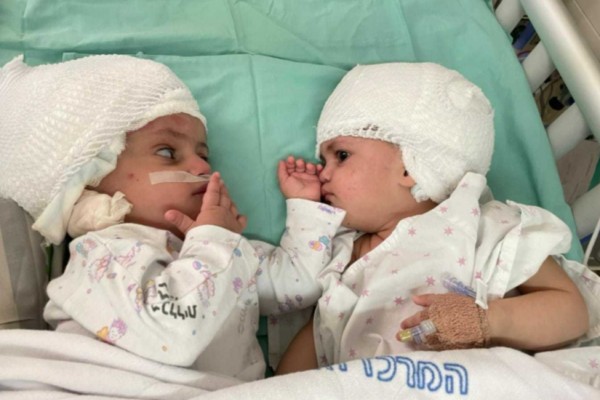“From a doctor’s point of view, we’re all one,” Dr. Noor ul Owase Jeelani, the world’s foremost expert on separating conjoined twins, told Times of Israel.
By Pesach Benson
The 12-hour operation was preceded by more than 100 hours of preparation over a period of six months. But for the world’s foremost expert on separating twins conjoined at the head, it didn’t matter that he was a Muslim operating in Israel to save Jewish babies.
Earlier this month, dozens of experts from Israel and abroad separated the one-year-old twin girls. The operation was a success and the babies are expected to live a normal life.
“It was a fantastic family that we helped,” Dr. Noor Ul Owase Jeelani told Times of Israel. ”As as I’ve said all my life, all children are the same, whatever color or religion. The distinctions are man-made. A child is a child. From a doctor’s point of view, we’re all one.”
Dr. Jeelani, originally from Kashmir, is a pediatric neurosurgeon at London’s Great Ormond Street Hospital. He has performed four similar operations in the past. But the procedure, which was done at Soroka University Medical Center in Beer Sheva in September, was Jeelani’s first outside Britain. Nobody at Soroka had ever performed such a procedure, so when the babies were born earlier this year, the hospital reached out to him.
Jeelani along with his colleague, Prof. David Dunaway, directs a nonprofit, Gemini Untwined, to plan and perform such operations.
Separating twins conjoined at the head is a very delicate procedure. The babies’ skulls were fused together and their brains intertwined, all supported by shared blood vessels. On the-spot decisions, such as which baby should be given a specific blood vessel, have potentially long-term impact on brain functions.
“We’ve been involved right from the start, talking to the team in Israel and planning it with them over a period of six months,” Jeelani told Times of Israel.
The efforts paid off.
“There was this very special moment when the parents were just over the moon,” Jeelani said. “I have never in my life seen a person smile, cry, be happy, and be relieved at the same time. The mother simply couldn’t believe it, we had to pull up a chair to help her to calm down.”
Conjoined twins, who are born sharing body parts are rare. According to Gemini Untwined, only five percent of conjoined twins are connected at the head. Many conjoined twins die in childhood, but advances in medical technology — especially in 3D-imagery that gives doctors the ability to see the cranial anatomy of the twins from different angles and zoom in on details — give the children better odds.
